How to Safely Over-Winter Petrol Garden Machinery
Step-by-Step Guide to Winterising Petrol Garden Equipment
As the days get shorter and autumn gives way to the colder months, it’s time to think about putting your petrol-powered garden machinery to bed for winter. But simply wheeling your machinery into the shed until spring isn’t enough. Proper winter preparation protects your investment, prevents costly repairs, and ensures your equipment starts reliably when the growing season returns.
Here’s our complete guide for over-wintering your petrol garden equipment in the UK. Alternatively, if you live near Basingstoke, simply book your machinery in to our Tadley store for a winter service and we will do all the work for you!
Why Winter Preparation Matters
Our winters bring damp, cold conditions that can wreak havoc on stored machinery. This is because petrol deteriorates over time forming gum and varnish that clogs carburettors and moisture causes rust and corrosion, leading to:
- Blocked fuel lines
- Corrosion and rust
- Hard starting or engine failure
- Reduced lifespan of your machinery
But the good news is that a little effort now saves considerable headache and expense come springtime.
The Essential Steps
1. Give Everything a Thorough Clean
Start by giving your machinery a proper clean. Dirt, grass, and sap can hold moisture, leading to corrosion during storage.
Lawn Mowers
- Remove grass clippings from under the deck and around the blades, using a stiff brush for caked on material
- Wipe down the body and wheels with a damp cloth (avoid spraying water directly on the engine or carburettor).
- Remove any debris from air vents and cooling fins, as blocked airways can cause overheating when you restart in spring.
- Consider blocking the wheels to prevent flat spots on pneumatic tyres or slightly over-inflate them.
Hedge Trimmers, Strimmers, and Chainsaws
For all Machines:
- Clean blades and cutting lines of sap, leaves, and debris.
- Apply a light coating of oil to metal parts to prevent rust.
- Strimmers: Remove the cutting line and clean the head thoroughly. Store with the shaft horizontal if possible.
- Chainsaws: Drain the bar oil, clean the bar and chain thoroughly, and apply protective oil. Store with the chain loosened slightly.
- Pressure washers: This is critical – any water left in the pump can freeze and crack it. Run pump saver fluid through the system or use an antifreeze solution designed for the purpose.
Check for Damage:
Inspect for loose screws, worn parts, or cracked housing. Replacing damaged components now will save frustration in Spring.
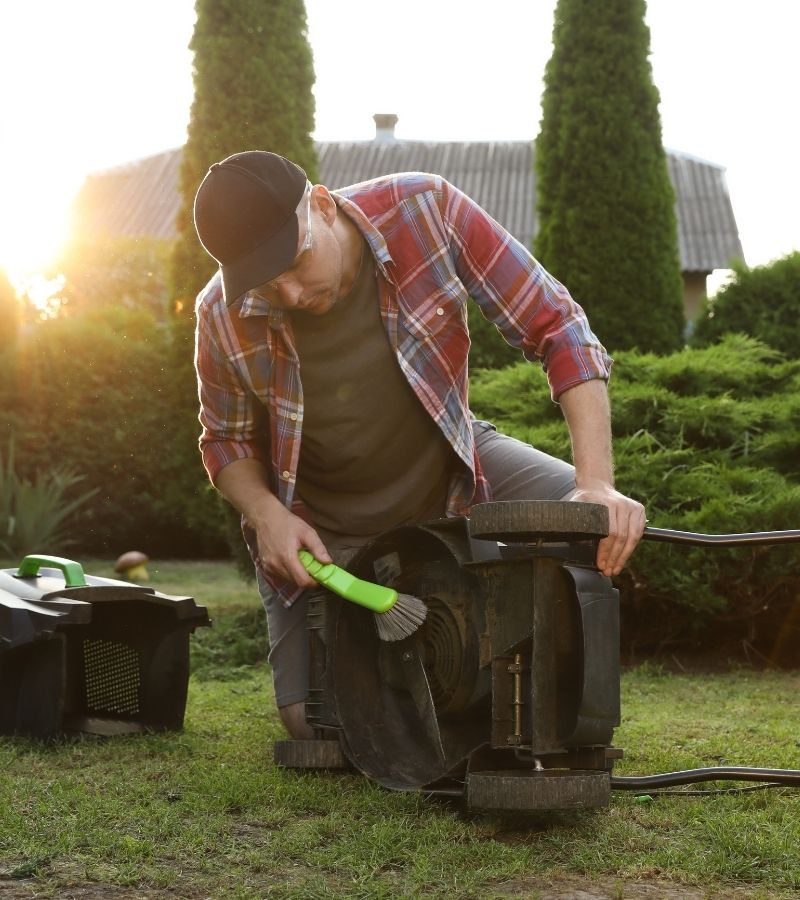
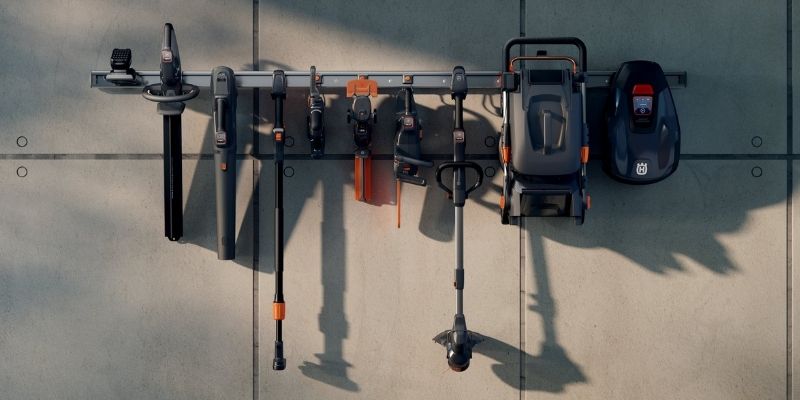
2. Deal with the Fuel
One of the biggest causes of problems over winter is old fuel. Petrol can degrade and cause gumming in the engine.
Option A: Run the tank dry.
This empties the carburettor and fuel lines.
Option B: Fill the tank completely.
Run the engine briefly to circulate the treated fuel throughout.
Aspen Fuel
Many users prefer to run the tank dry as it eliminates the risk of fuel degradation entirely. However, if you use Aspen fuel then filling the tank completely is a great solution.
We strongly recommend this fuel. It is virtually free from ethanol, aromatics or benzene and is highly stable over winter – meaning no additional measures need be taken and no worries about starting in the spring! We sell the full range of Aspen 2-stroke and 4-stroke fuels at our Tadley store.
Never store machinery with untreated fuel sitting for months. Petrol begins degrading within 30 days, and today’s ethanol-blended fuels are particularly prone to causing problems.
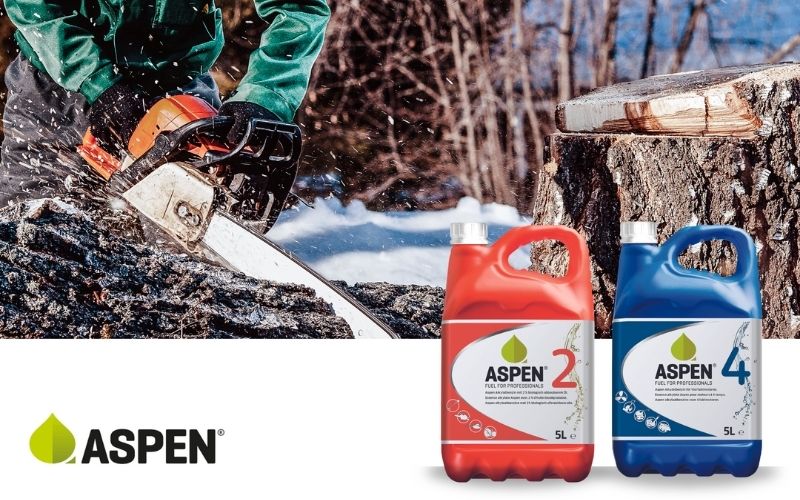
3. Change the Oil
Old oil contains combustion by-products, moisture, and contaminants. Leaving these sitting in your engine over winter promotes corrosion. Change the oil while the engine is warm (contaminants stay suspended and drain out more easily) to help protect the engine components during storage. Dispose of old oil responsibly at your local recycling centre.
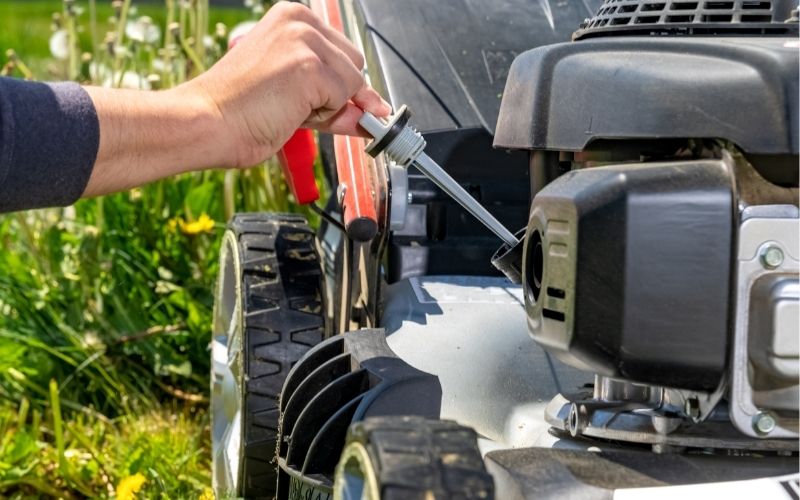
4. Remove or Maintain the Battery
For ride-on mowers and larger machinery with batteries, disconnect and remove the battery. Store it in a cool, dry place (but not freezing) and use a trickle charger monthly to maintain its charge (we have trickle chargers available, please call the store for details). Clean any corrosion from terminals with a wire brush.
5. Check and Clean or Replace Filters
Remove the air filter and inspect it. Replace paper filters if they’re dirty or damaged. Foam filters can be washed in warm, soapy water, dried completely, and lightly oiled before refitting. A clean air filter prevents debris from entering the engine during storage.
6. Inspect and Clean the Spark Plug
Remove the spark plug and inspect it for wear, carbon deposits, or damage. Clean it with a wire brush or replace if necessary. Before reinstalling, add a small amount (about a tablespoon) of engine oil into the spark plug hole, then pull the starter cord a few times to distribute the oil across the cylinder walls. This prevents rust formation inside the cylinder.
7. Sharpen and Protect Blades
Remove mower blades and sharpen them properly. This is much easier to do now than in the spring rush. After sharpening, apply a light coating of oil to prevent rust. The same applies to strimmer blades and hedge trimmer blades. We offer blade sharpening at out Tadley store.
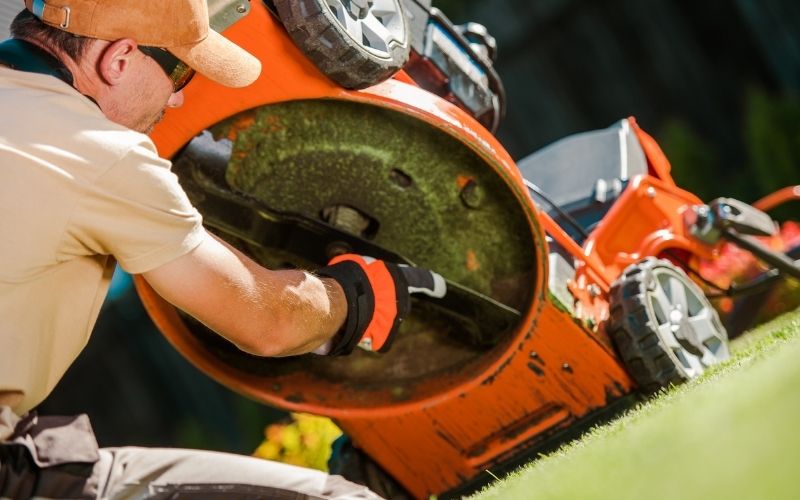
8. Lubricate Moving Parts
Apply appropriate lubricant (anti-rust spray or tool oil) to all cables, pivot points, and moving parts including blades and shafts. This prevents seizing and corrosion. Consult your owner’s manual for specific lubrication points.
9. Check Belts and Cables
Inspect drive belts for cracks, fraying, or glazing. Check cables for wear or damage. It’s better to identify and replace these now rather than discovering a problem when you’re eager to start mowing in spring.
10. Choose the Right Storage Location
- Dry, frost-free location: A shed or garage is ideal, but make sure it’s well-ventilated and dry. Avoid damp corners.
- Off the floor: Use shelves, racks, or pallets to keep tools off concrete floors which can draw moisture.
- Cover sensitive parts: Tarpaulins or breathable covers can help protect machinery from dust and condensation. Some owners slip plastic bags over exhaust outlets to prevent insects nesting inside.

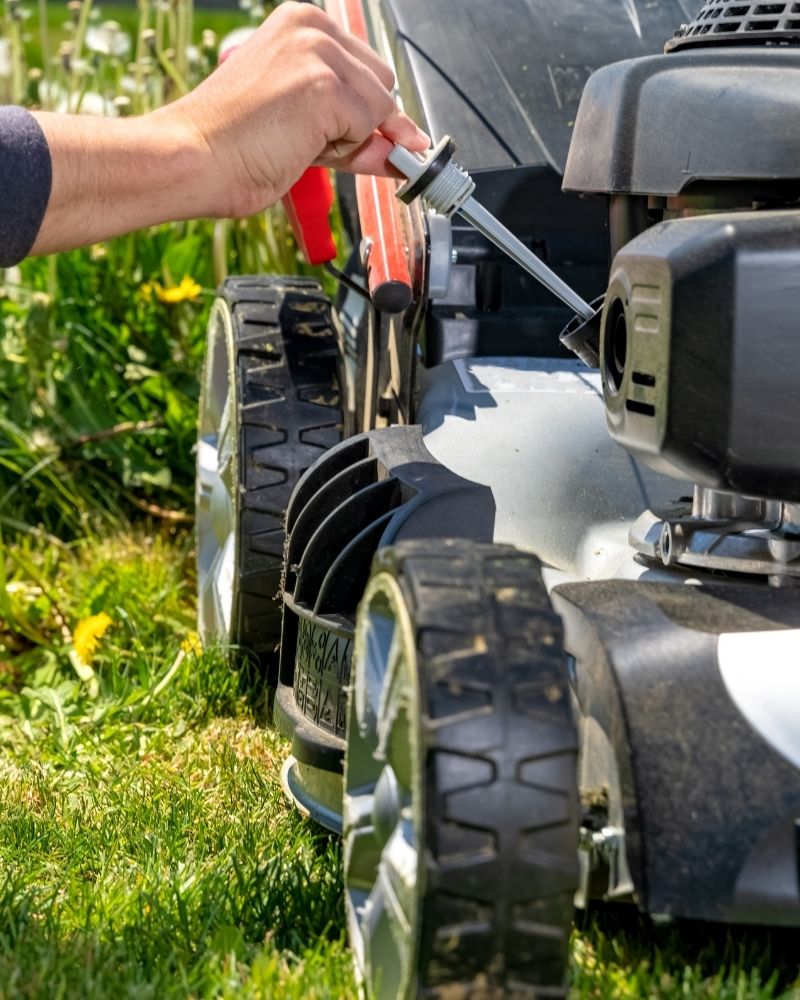

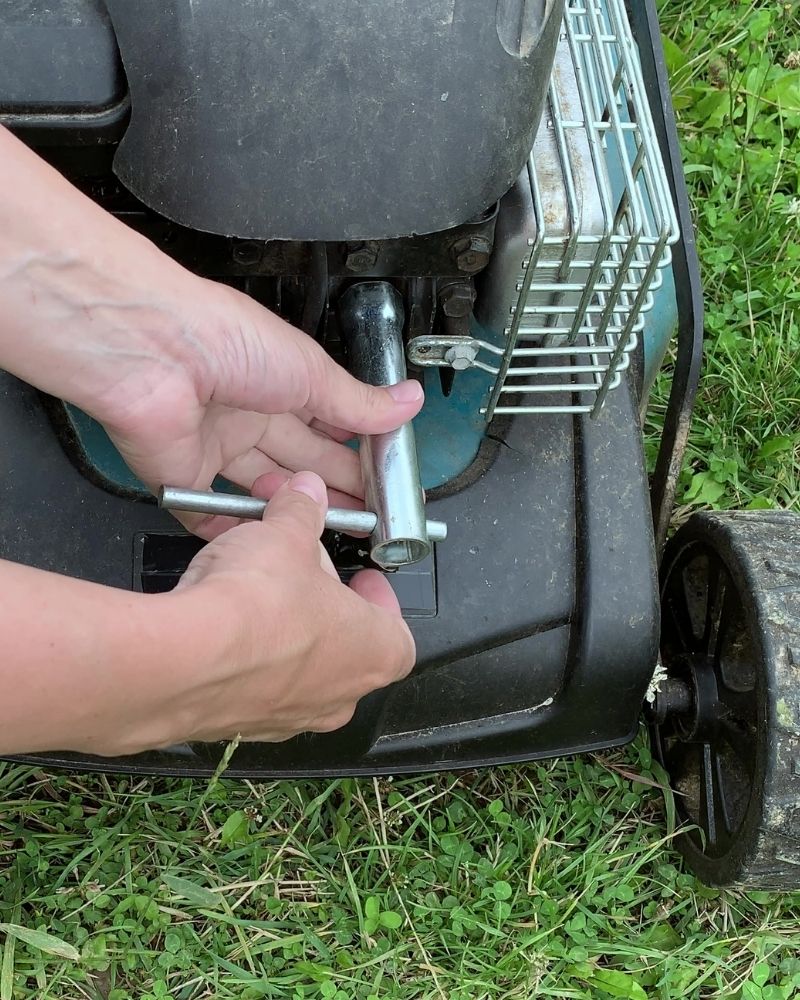
Spring Start-Up Checklist
- Reinstall the battery (if removed) and ensure it's charged
- Check oil level
- Refill with fresh fuel (if you ran it dry)
- Reinstall and reconnect the spark plug
- Check tyre pressures
- Do a visual safety inspection
A well-maintained machine should start easily and run smoothly after proper winterisation.
The Bottom Line
Taking the time to clean, service, and store your petrol garden machinery properly will save you money and stress in the long run. With a few simple steps — fuel care, cleaning, oiling, and careful storage — you can add years to its lifespan and save considerable money on repairs. And your tools will be ready for action when the UK garden season returns.
Now is the perfect time to get started – before the worst of the winter weather arrives and while you can still work comfortably in the shed. Alternatively, simply drop your machinery into our Tadley store for a service and we will do all the work for you!
Please note, these are just general tips to help you get started, and we always recommend you check your machine’s manual for specific advice before winterising.
